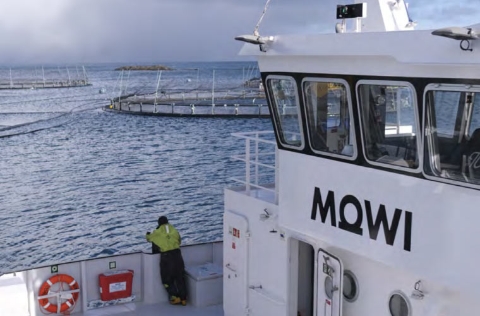In the European Union, organic aquaculture enjoys an image of purity and ecological harmony. Consumers associate it with open water, natural substrates, and minimal human interference. Yet, when it comes to measurable sustainability and fish well-being, a strong case can be made that recirculating aquaculture systems (RAS)-often excluded from organic certification-offer greater potential.
Under Regulation (EU) 2018/848, RAS are allowed only in hatcheries and nurseries for organic fish, never for the grow-out phase. The rationale is philosophical: organic must remain “close to nature”. But this interpretation overlooks the fact that nature, in the form of climate change, pollution, parasites, and disease outbreaks, is not always a friendly place for aquatic life.
RAS, when well designed and responsibly managed, provide an unparalleled degree of environmental control. Water quality can be kept at optimum parameters 24/7, free from harmful algal blooms, sea lice infestations, or sudden temperature swings. Waste can be captured and reused as fertiliser, closing nutrient loops. Production can take place close to markets, reducing transport emissions and the carbon footprint of the final product.
From a fish welfare perspective, RAS can be tailored to species-specific needs-from flow rates and lighting to stocking densities-ensuring fish are not only surviving but thriving. Stress levels can be minimised, disease risks drastically reduced, and handling times optimised to protect health and flesh quality. Far from being an artificial compromise, this can mean fish live more confortably than in many “natural” environments.
In terms of nutritional quality, RAS technologically allows precise control over feed composition and feeding regimes. This can translate into consistent fillet texture, optimal fat content, and tailored omega-3 levels-features valued by both chefs and health-conscious consumers.
Critics of RAS point to its higher energy demands, but advances in renewable energy integration, waste heat recovery, and system efficiency are closing that gap rapidly. In contrast, open-water organic farms may have lower direct energy use but cannot always prevent environmental damage from escapes, benthic impact, or disease transfer to wild stocks.
If sustainability is to be defined by data-driven performance rather than romantic notions of “naturalness”, RAS deserves serious recognition-even within organic frameworks. With robust certification standards that ensure low-carbon operation, responsible sourcing, and high welfare metrics, RAS could set a new gold standard for premium aquaculture.
The future of aquaculture should not be a binary choice between “organic” and “technology”. Instead, it should be about integrating the most effective tools-and RAS is one of the most powerful tools we have to meet the environmental, ethical, and quality demands of a growing global seafood market.


